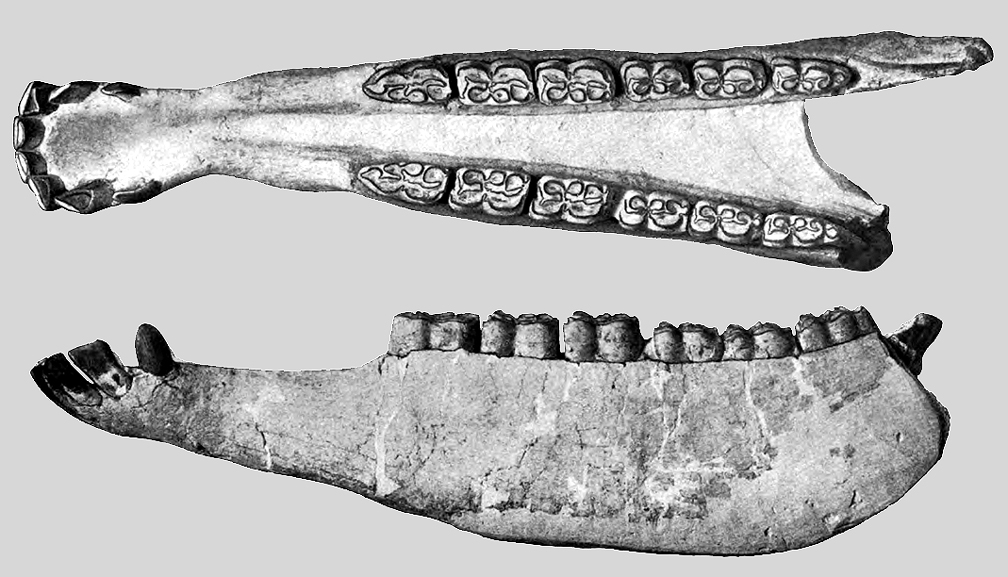
| Two views of the same lower jaw from the Hagerman Horse---Equus simplicidens, collected from exposures of the Pliocene Coso Formation, Coso Mountains, Inyo County, California. Equus simplicidens is considered one of the earliest known members of the genus Equus, which includes the modern horse and all other equids. Originally described as Plesippus francescana, but is now recognized as Equus simplicidens. Photograph courtesy a public domain document. |

